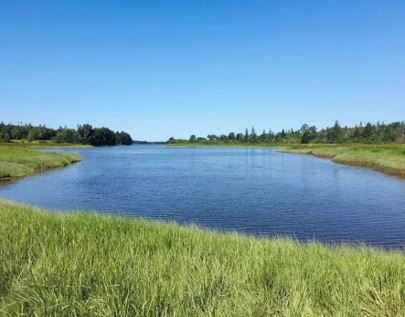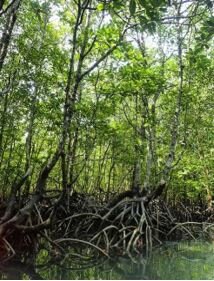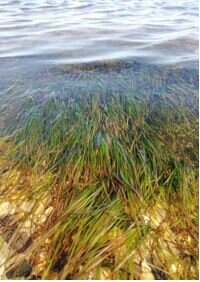Feeling blue? Marine ecosystems can help tackle climate change
BY LUCY MCMAHON
Climate change is responsible for devastating and, in some cases, irreversible changes to our marine environment. The Intergovernmental Panel on Climate Change (IPCC) recently released a ‘Special Report on the Ocean and Cryosphere in a Changing Climate’. The report paints a harsh reality for the future of our beloved marine environment: ocean warming will continue, heat waves will become more intense and frequent, sea level will continue to rise, and out of all of our marine and coastal ecosystems, coral reefs will face the greatest risk under future climate change.
Ocean optimism may yet be found in the form of ‘blue carbon’ habitats, which have sparked global interest for their role in tackling climate change. ‘Blue carbon’, a term coined 10 years ago, refers to carbon that is captured and stored by marine and coastal ecosystems. There are 3 coastal vegetated habitats that punch well above their weight when it comes to blue carbon; together, these ecosystems store 50% of the carbon found in marine sediments, despite only occupying 0.2% of the ocean’s surface area. These coastal powerhouses are salt marshes, mangroves and seagrasses.
Pictured in order : Salt marsh, Eastern USA [credit: Lucy McMahon]; Mangrove forest, Malaysia [credit: Jamie Small]; Seagrass meadow, Eastern Australia [credit: Oliver Dalby, Zosteria lab]
Salt marshes, mangroves and seagrasses have the potential to make impressive contributions to global carbon storage and consequently, help mitigate the effects of climate change. These habitats bury carbon significantly faster than terrestrial forests and the rate of burial has been estimated at 35 times faster in seagrasses and up to 55 times faster in salt marshes. So, what makes these previously over-looked blue carbon habitats so effective at their role in fighting climate change?
Salt marshes, mangroves and seagrasses are some of the most productive ecosystems in the world. High growth and reproductive rates are supported by the removal of vast amounts of carbon dioxide from the atmosphere, via photosynthesis. The vegetation of blue carbon habitats also plays a fundamental role in slowing waves and trapping carbon-rich sediment from the water. A proportion of trapped carbon may have originated from other ecosystems, such as kelp forests or algae, making blue carbon habitats an important sink for carbon from adjacent environments. The build-up of sediment layers also helps to bury carbon deep underground, where the majority of blue carbon is actually stored. Carbon stored belowground in waterlogged sediments receives greater protection from decay and breakdown; this contributes to long-term storage for millions of years, rather than the lifespan of trees, which applies for carbon stored in terrestrial forests.
Whilst blue carbon habitats are gaining increased global attention, they remain amongst the most highly threatened ecosystems in the world and are being degraded at an alarming rate. Globally, between 25 – 50% of blue carbon habitats have been degraded or lost over the past century. Owing to a multitude of threats including pollution and coastal development, 92% of seagrass habitat has been lost in the UK alone during the same time period. When blue carbon habitats are disturbed, a proportion of their stored carbon is released back to the atmosphere as carbon dioxide, alongside the release of other greenhouse gases. Anthropogenic degradation therefore reduces future ability for carbon capture and storage, but also threatens a crucial shift in salt marshes, mangroves and seagrasses from acting as carbon sinks to potential sources of carbon dioxide.
In order to reap the benefit of a low-cost, natural solution in the fight against climate change, it is essential that salt marsh, mangrove and seagrass ecosystems receive adequate protection with ongoing conservation and restoration efforts. Such efforts will also serve to strengthen coastal protection, enhance biodiversity and fisheries, and restore water quality.



